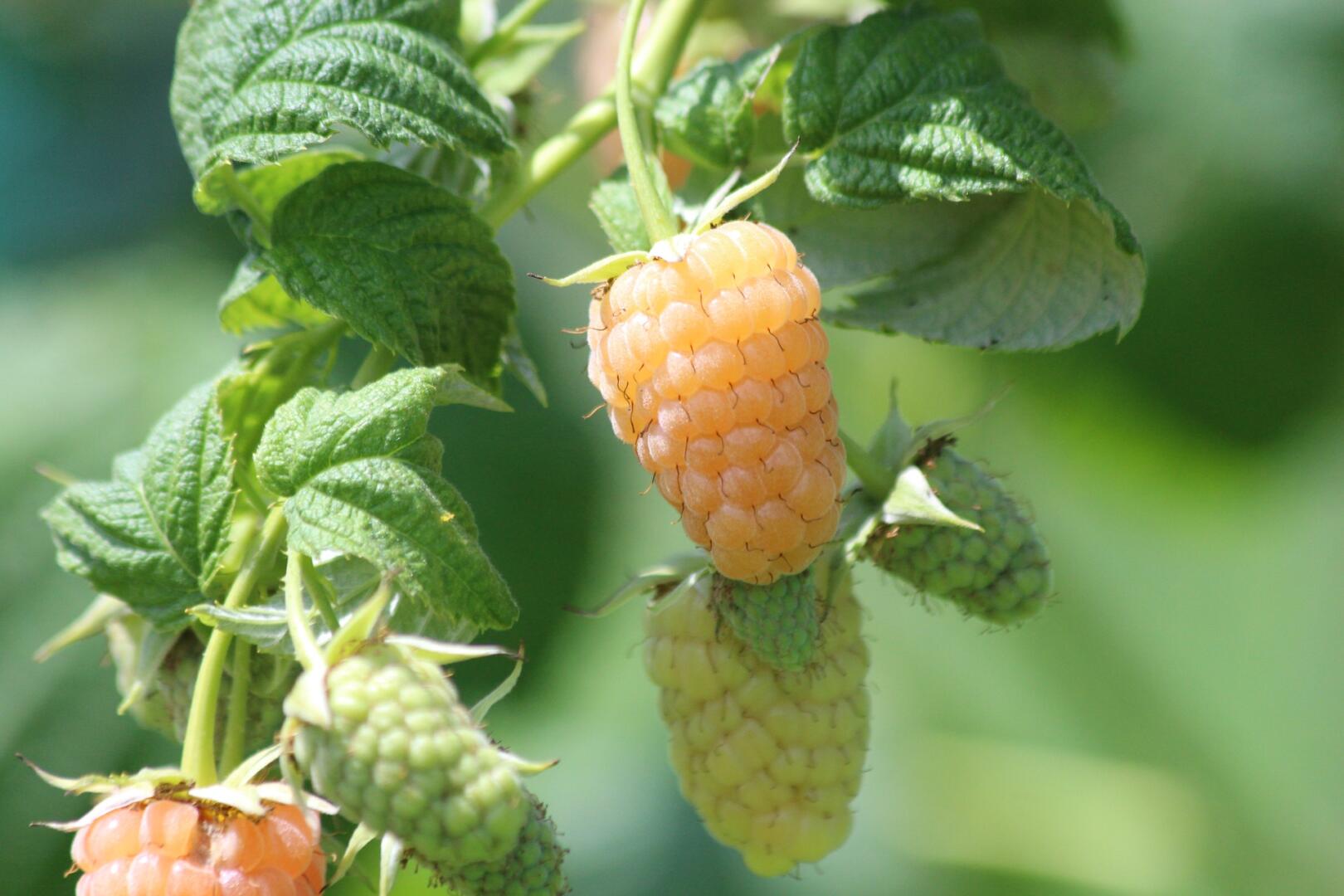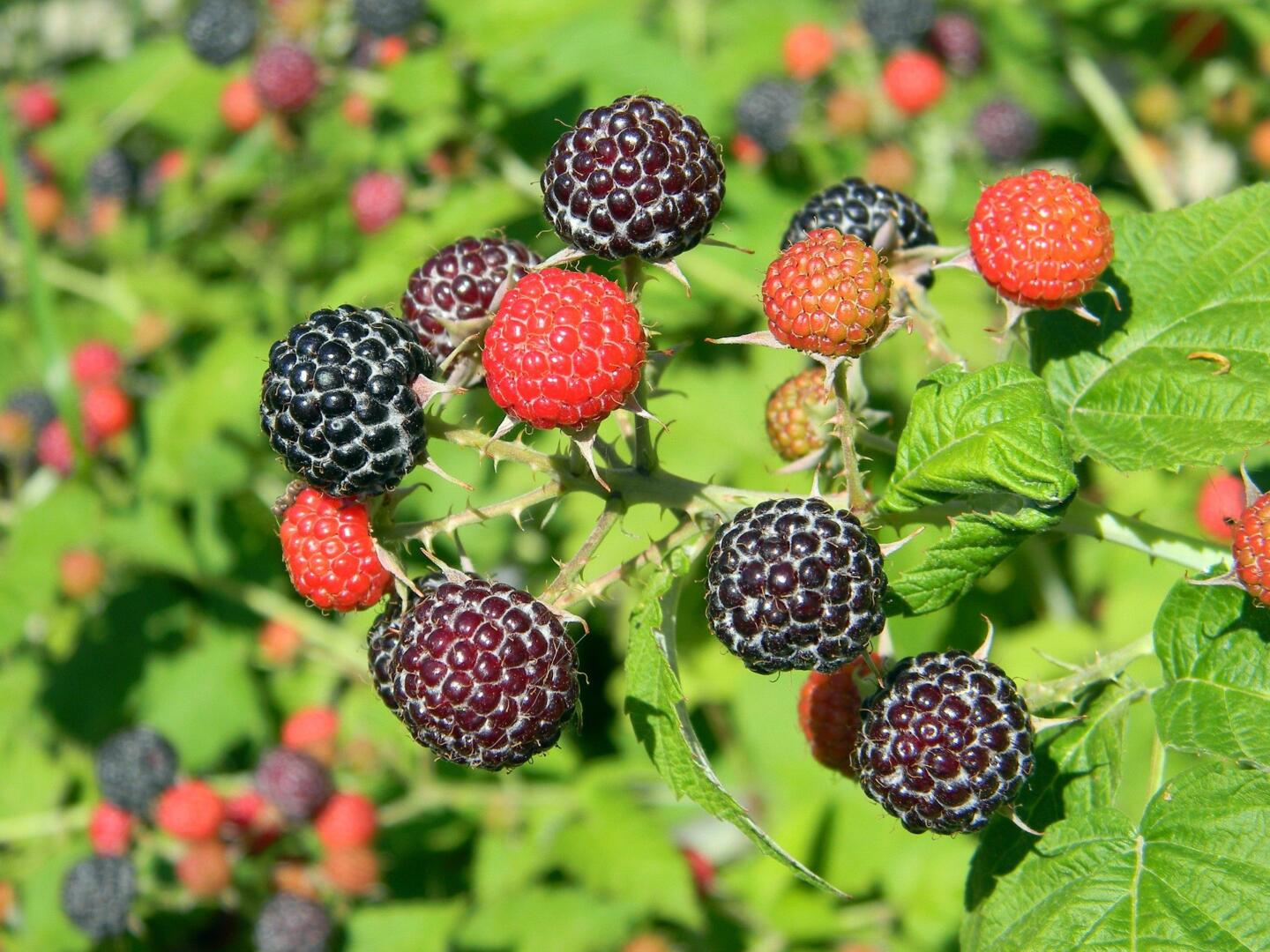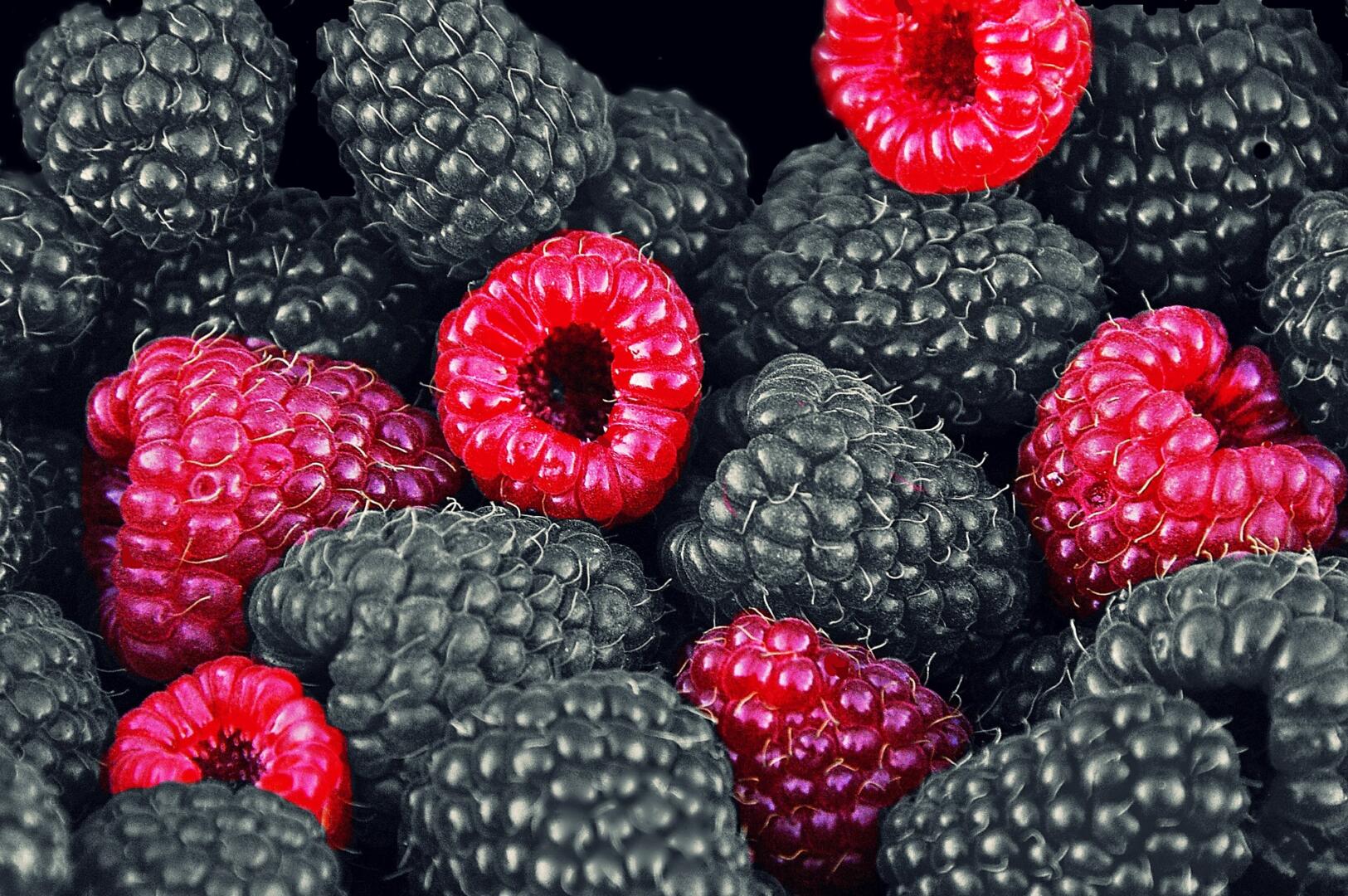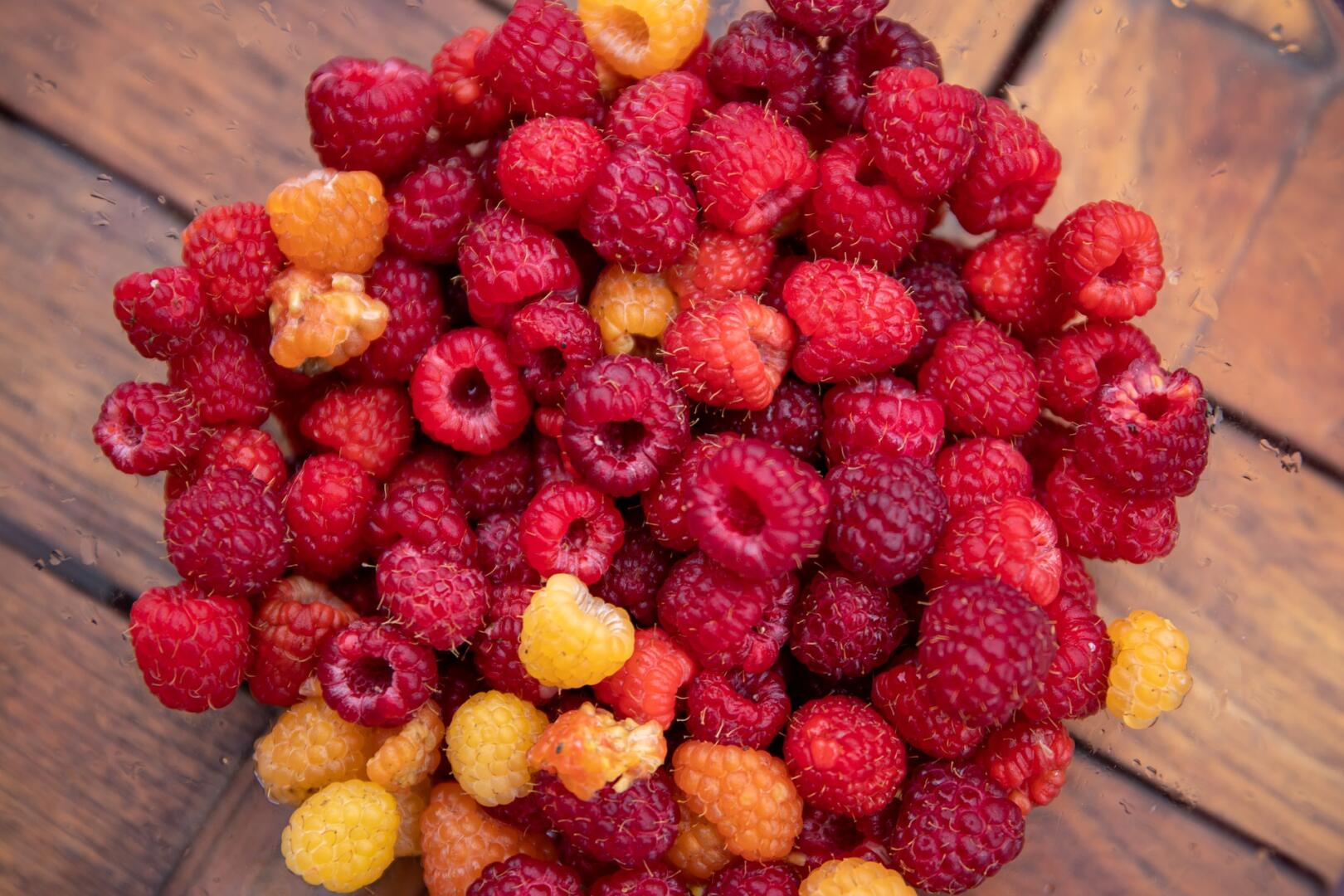Growing raspberries is one of the easiest and most rewarding plants to grow in today’s fruit garden. The plants grow relatively fast, they fruit early, and some plants fruit twice.
When Planting Edibles, Always Start with a Plan:
Step 1: Comprise a wish list of plants.
Step 2: Experiment – Try something new!
Step 3: Know your land and location – Sunlight, space, and soil conditions.
Step 4: Growing methods – Raised beds, traditional rows, or containers?
Step 5: Choose your fruit – Start with trees, then berries and vegetables.
There is nothing more scrumptious than eating berries harvested from your own crop, and your success begins with the planting site and method you use.
When you purchase your plants from Herbein’s Garden Center, they should already be acclimated to our temperatures. If, however, you mail-order a plant, be sure to place them in a sheltered, shady area and gradually increase its time outdoors by 1-2 hours a day. After about 7 days, your plants should be ready to transplant into the ground.
BEFORE planting, consider these 3 things when planning your home orchard:
- Cross-pollination
- Sun and soil
- Space for future plants
Cross-pollination
Most raspberry varieties are self-pollinating and will fruit without another variety’s pollen. However, if you plant a crop with multiple varieties, you will see a larger crop, as is the nature of cross-pollination.
Plant in full sun (at least 6-8 hours) and well-draining fertile soil. Light is critical to fruit production and fruit quality and helps minimize fungal problems.
Well-draining soil will keep your raspberry plant’s root system healthy and rot free. Because raspberry plants are rhizomes, they send up new canes from the roots, so root health is especially important for raspberry plants. If necessary, add soil amendments to heavy or fast-draining soils.
Check your soils pH before you dig. You can purchase a Penn State Soil Test Kit from us or a meter for a quick result. Raspberries need a soil pH between 6.0 – 6.8. Use Espoma Organic Garden Lime if the soil’s pH is too low, or Espoma Organic Soil Acidifier if the soil’s pH is too high.
Spacing
As a rule of thumb, most raspberry plants grow to 4-5’ both tall and wide but check the plant’s tag to be certain of it’s mature width and use that as your guide for spacing between your plants.
- Plant raspberry plants 3-5’ apart with rows 6-8’ apart.
- DO NOT plant Red, Gold or Purple raspberries within 75-100’ of BLACK raspberries. Black raspberries can be more susceptible to viral diseases carried by aphids from nearby raspberry plants.
Planting Tips
- Dig the hole deep and wide enough to accommodate its current root system and having plenty of room for the roots to spread out.
- Gently pull the plant from the pot and loosen the roots. Place the plant in the hole with roots down and spread them out, backfilling with the soil you dug out.
- Water thoroughly with a deep, slow soaking. If the soil settles, add more soil until it is ground level.
- Fertilizing can be done at the time of planting in the spring and done no later than July 1st.
- After planting, be sure to prune the canes back to about 2” above the ground. THIS IS CRUCIAL and will encourage the roots to send up new growth during the growing season.
Fertilizers we recommend for use with raspberry plants:
Espoma Organic Berry-tone
Espoma Organic Holly-tone
Preparing Your Soil
Roots will grow faster if they’re spread out. Dig your hole deep and wide enough so the root system has enough room to expand. If the soil needs loosened up, mix dehydrated cow manure, peat moss or compost (up to 1/3 concentration) into the pile of soil you dig from the hole. Use this to backfill and cover the plant’s root system.
Adding organic matter will improve just about any type of soil condition by helping retain moisture and nutrients and break apart clay soils so that water can penetrate through and roots can spread.
Pests & Disease Control
Every plant has the potential for insect and disease damage. Big factors like location and weather will play a role in which issues your plants will encounter. Practicing proper maintenance on your fruit & berry plants such as watering, pruning, spraying, weeding, and cleanup will help keep most issues at bay.
Below is a list of pests that have been known to make an appearance on raspberry plants.
Aphids Mites
Cane Borer Rose Chafer
Fruitworm Sawfly
Japanese Beetle Thrips
Leafroller
Below is a list of diseases known to infect raspberry plants.
Anthracnose Mosiac
Botrytis Fruit Rot Orange Rust
Cane Blight Powdery Mildew
Leaf Curl Spur Blight
Grab our brochure “Pest & Disease Control for Edibles” for more in-depth info.
Pruning Raspberry Plants
Pruning is essential for proper development of fruit growth.
- Raspberries should be pruned every spring to keep branches from becoming tangled and to improve their ability to produce fruit.
- Once your raspberry plants have put out enough growth, prune in the early spring just as new growth is emerging. Prune young canes back to about 4-5’ tall to discourage overcrowding and shading, Remove any thin, dead, damaged canes.
- Black raspberries have a different growth habit than red or yellow berries and should only have the tips pruned when the new shoots are about 3’ tall. Trimming the tips off keeps the branches from shooting skyward. These branches should be kept at about 10” long.
- Summer-bearing raspberries bear one fruit crop on the lower part of their two-year old canes and will die back after harvesting. Prune these back to ground level so the one-year-old canes can thrive and become stronger for the next growing season.
Spraying Raspberry Plants
Having a proactive spray program includes both the dormant season as well as the growing season for pests and diseases.
When to spray:
- Dormant Season (late winter/early spring, before bud break)
- Growing Season – Bud Break (emergence of new growth)
- Growing Season – After Blossom (after petals drop*)
*Gives bees and other beneficials a chance to safely pollinate the blossoms.
Pest Controls
Bonide® All Seasons® Dormant Oil Spray
Bonide® Captain Jack’s™ Deadbug Brew Dust
Bonide® Insecticidal Soap
Bonide® Thuricide® BT
GardenTech® Sevin® Bug Killer
Disease Controls
Bonide® Captan Fruit & Ornamental (wettable powder)
Bonide® Copper Fungicide
Ferti-Lome® Fire Blight Spray
Combination Sprays for Pests & Diseases
Bonide® Citrus, Fruit & Nut Orchard Spray
Bonide® Neem Oil
Watering
Unless you typically need to water your plants for “normal” plant growth, you probably won’t need to water after the first growing season. However, don’t forget to water directly after planting at your site.
Harvesting
When to Harvest
Harvest time is when you get to reap the fruits of your labor. Get ready to enjoy your delicious homegrown raspberries!
- For the best flavor and texture, harvest your raspberries when it is cool and dry. You can expect to harvest starting in the summer of the second year after planting.
- When ready to harvest, grasp the berry and gently tug to release the berry from the stem. It should easily twist off when ripe. Do not stack your berries too deep in your container or they will squash. Do not wash raspberries until ready to eat, as washing makes them prone to early spoiling.
- Keep picked raspberries out of the light and refrigerate any remaining berries or freeze in a single layer on a cookie sheet and place them in freezer bags to store in the freezer.




